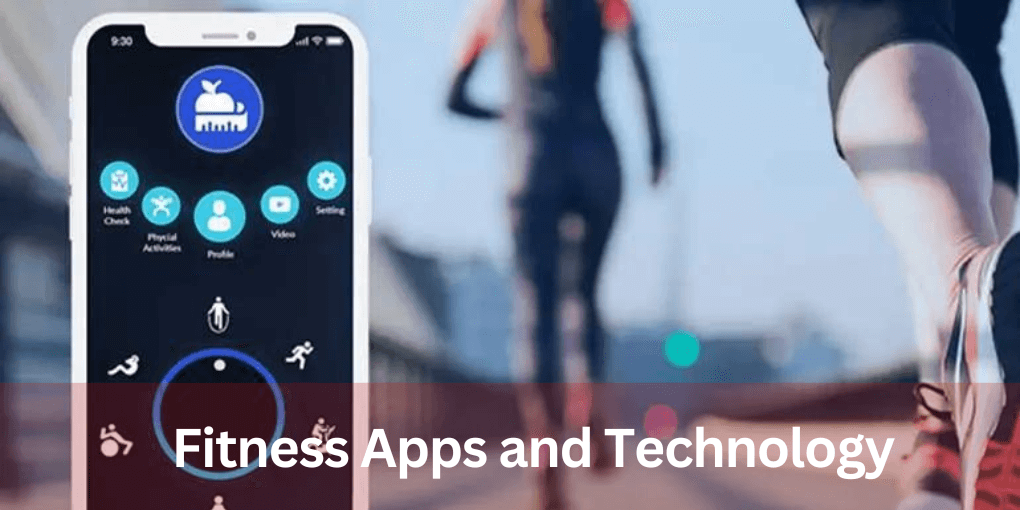
In recent years, the world of fitness has been revolutionized by technology, with the emergence of countless fitness apps.
These apps have made it easier than ever for fitness enthusiasts to keep track of their progress and achieve their health goals.
With the help of technology, the world of fitness has undergone a transformation, making it accessible to anyone with a smartphone or a tablet.
These apps are designed to provide users with personalized workout routines and diet plans, as well as tracking their daily activity levels.
Advancements in technology have made it possible for these apps to track every aspect of one’s fitness journey, including sleep, nutrition, and mental well-being.
Fitness apps and technology have provided people with a wealth of resources to help them achieve their fitness goals, and it’s exciting to see what new innovations the future holds.
Table of Contents
ToggleHarness Technology for Fitness Success
Digital tools can be a great aid in achieving your fitness goals. Here are some ways to harness technology for fitness success:
1. Fitness trackers
Wearable technology, such as fitness trackers or smartwatches, can help you monitor your daily activity levels, track your workouts, and keep an eye on your progress toward your fitness goals.
2. Fitness apps
There are countless fitness apps available that can help you with everything from creating a workout routine to counting calories or tracking your water intake.
Some popular apps include MyFitnessPal, Fitbit, and 7 Minute Workout.
3. Online fitness communities
Being a part of a fitness group helps keep you accountable and inspired.
You can find online groups or forums on social media platforms or fitness websites where you can share your journey with others and get support and advice along the way.
4. Virtual personal trainers
Virtual personal trainers can create personalized workout plans and provide one-on-one coaching via video or messaging platforms.
This is a convenient option for those who prefer working out at home or on their own schedule
Key Features of Popular Fitness Apps
Digital tools can be a great aid in achieving your fitness goals.
Here are some ways to harness technology for fitness success:
- Fitness trackers: Wearable technology, such as fitness trackers or smartwatches, can help you monitor your daily activity levels, track your workouts, and keep an eye on your progress toward your fitness goals.
- Fitness apps: There are countless fitness apps available that can help you with everything from creating a workout routine to counting calories or tracking your water intake. Some popular apps include MyFitnessPal, Fitbit, and 7 Minute Workout.
- Online fitness communities: Joining a fitness community can help you stay motivated and accountable. You can find online groups or forums on social media platforms or fitness websites where you can share your journey with others and get support and advice along the way.
- Virtual personal trainers: Virtual personal trainers can create personalized workout plans and provide one-on-one coaching via video or messaging platforms. This is a convenient option for those who prefer working out at home or on their own schedule.
Benefits of using fitness technology
Using fitness technology has numerous benefits for those striving to improve their health and fitness. Here are three key benefits of using fitness technology:
1. Greater accountability
Fitness technology can help individuals stay accountable to their goals. For example, tracking progress through a fitness app can help users stay on track and make adjustments when necessary.
Additionally, wearable technology like fitness trackers can monitor activity levels throughout the day, providing a clear picture of overall progress.
2. Increased motivation
Fitness technology can provide motivation to keep individuals on track with their fitness goals.
Seeing progress over time, receiving notifications when goals are met, and participating in challenges with other users can all serve as motivating factors.
3. Effective goal-setting
Fitness technology can help individuals set and achieve realistic goals.
Apps and wearable devices can track progress towards those goals, while data analysis can help individuals make any necessary adjustments to ensure they are progressing toward their desired outcome.
Practical Tips for Selecting the right fitness app for your needs and Budget
Choosing the right fitness app for your needs and budget can be a daunting task, as there are many options available. Here are some practical tips to help you make the right choice:
1. Identify your goals
Consider what your fitness goals are and choose an app that aligns with those goals. For example, if you want to track your nutrition, choose an app that offers calorie counting and food-tracking features.
2. Consider your lifestyle
Choose an app that fits with your lifestyle. If you travel a lot, choose an app that offers portability and can be used on the go.
3. Check app reviews
Look at app reviews and ratings to see how other users have benefitted from the app and how user-friendly it is.
4. Look for free trials
Many apps offer a free trial period, allowing you to try out the app before committing to a subscription.
5. Compare pricing
Consider the cost of the app and any subscription fees. Compare pricing across different apps and consider if the features justify the cost.
6. Research app support
Look for apps that offer support channels in case you encounter any issues.
7. Don’t rely solely on technology
It is important to remember that fitness technology is a tool to aid in achieving your fitness goals. Consistent healthy habits, a balanced diet, and an exercise routine are still key components to maintaining a healthy lifestyle.
Best fitness devices to invest in for accurate tracking and measurements
There are many fitness devices available that can help you track your progress and accurately measure your fitness and health metrics. Here are some of the best fitness devices to invest in:
1. Fitness trackers
: Fitness trackers like Fitbit and Garmin can track daily activity levels, including steps taken, distance traveled, and calories burned. They can also monitor heart rate, and sleep patterns, and provide insights into overall health and well-being.
2. Smart scales
Smart scales like the Withings Body+ can track weight, body fat percentage, muscle mass, and even air quality in your home. They can also sync with fitness apps to provide a comprehensive picture of your overall health and fitness.
3. Heart rate monitors
Heart rate monitors like the Polar H10 allow for accurate tracking of heart rate during exercise, providing insight into training intensity and calorie burn.
4. Smartwatches
Smartwatches like the Apple Watch and Samsung Galaxy Watch offer a range of fitness tracking features, including heart rate tracking, workout tracking, and GPS tracking. They can also monitor sleep and provide coaching and motivation to meet fitness goals.
5. Blood pressure monitors
Blood pressure monitors, such as those from Omron or Withings, can provide a more accurate picture of overall cardiovascular health for those with hypertension or other heart conditions.
Overview of the latest tech trends in Fitness industry
The fitness industry has been rapidly innovating, incorporating the latest technology trends into wearable fitness devices. Here are some of the latest trends in fitness technology:
- Smartwatches: Smartwatches have become incredibly popular in recent years. Along with fitness tracking capabilities, they offer a range of features such as phone notifications, music control, and voice assistants.
- Wearable Smart Technology: Wearable smart technology, including clothing, shoes, and even jewelry, is becoming increasingly popular. These devices can monitor heart rate, breathing patterns, and even posture to provide valuable insight into overall health and fitness.
- Virtual Reality: Virtual reality (VR) technology is being used to create immersive workout experiences. This technology can transport users into a virtual environment to simulate different workouts, from running through a forest to dancing in a virtual club.
- Artificial Intelligence: Artificial intelligence (AI) is being used to personalize workout routines and offer tailored coaching. AI algorithms can analyze user data to create personalized workout plans and offer feedback based on user performance.
- Health and wellness apps: Health and wellness apps are expanding beyond just fitness tracking. They now offer personalized health recommendations, stress reduction techniques, and mindfulness exercises.
How To Use Social Media To Connect with Others
Social media can be a powerful tool for connecting with others in the fitness community, finding motivation, and sharing your own fitness journey. Here are some tips on how to use social media to inspire and connect with others:
- Join fitness communities: Look for fitness groups on social media platforms like Facebook, Instagram, or Twitter. Joining these groups can offer a great source of motivation and support from others with similar fitness goals.
- Follow fitness influencers: Follow fitness influencers, trainers, and athletes who inspire you. Their content can be a great source of motivation and provide ideas for workouts, nutrition, and overall fitness.
- Share your own journey: Share your own fitness journey on social media, whether it’s progress pictures, workout videos, or sharing your favorite healthy recipes. Your journey can inspire others and also hold you accountable for your goals.
- Participate in challenges: Look for fitness challenges or start your own. This can be a great way to stay motivated and connect with others in the fitness community.
- Engage with others: Engage with others in the fitness community through likes, comments, and direct messages. This can help establish connections, offer support, and build a community of like-minded individuals.
The Role of virtual coaching and AI in personalized fitness plans
Virtual coaching and artificial intelligence (AI) technology are playing an increasingly important role in personalized fitness plans.
Virtual coaching involves the use of an online coach or trainer, while AI technology can analyze data to create personalized workout plans and offer tailored feedback.
Here are some ways that virtual coaching and AI can benefit personalized fitness plans:
1. Increased convenience
Virtual coaching and AI technology provide users with the flexibility to train on their own schedule and in their own environment.
With virtual coaching, users can receive one-on-one coaching from anywhere in the world, while AI technology can create and adjust workout plans based on user data.
2. Personalized feedback and adjustments
Virtual coaching and AI technology provide personalized feedback and adjustments for each user’s individual fitness level and progress.
AI can analyze data such as heart rate, activity level, and sleep quality to adjust the workout plan according to user progress.
3. Enhanced motivation
The personalization of virtual coaching and AI technology can provide users with more motivation to stick to their fitness plans.
By receiving tailored feedback, users are more likely to see progress and stay motivated to continue working towards their goals.
4. Improved Accountability
Virtual coaching and AI technology can provide users with accountability and support for their fitness plans.
This can increase adherence to the plan and help users stay on track toward their desired outcome.
Success stories of individuals who have used fitness technology
- Parker Busby: Parker used MyFitnessPal to track his calorie intake and lost over 200 pounds in just over a year. He useThere are countless success stories of individuals who have used fitness technology to achieve their goals.
- Lisa Reid: Lisa used a Fitbit tracker to guide her through a half-marathon training program. She found the tracker’s guided workouts helpful in staying on track and motivated to beat her personal record.
- Michael Rosen: Michael used the 7 Minute Workout app to fit in quick workouts during his busy schedule. Through regular usage, he lost over 100 pounds and continues to use the app to stay on track with his fitness goals.
Conclusion
Fitness technology has revolutionized the way we approach health and fitness.
From wearable devices like fitness trackers and smartwatches to apps that offer personalized coaching and motivation, fitness technology provides users with a wealth of resources to achieve their fitness goals.
The latest trends in fitness technology, such as virtual coaching and AI, offer even more opportunities for users to personalize their fitness plans and achieve their desired outcomes.
By embracing fitness technology and utilizing the tools available, anyone can make meaningful progress toward their fitness goals, improve their overall health and well-being, and stay motivated along the way.




